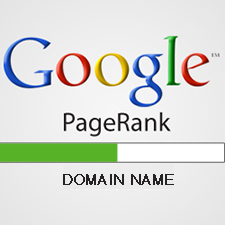
When someone visits your website or when a search engine spider crawls your webpages, the server returns an HTTP status code in response to the request, thus either the visitor or search engine can load the response stream successfully. However, sometimes, people may encounter some HTTP error messages displayed in web browser, and cannot load a web page properly.
Now, you may wonder which are the most common HTTP errors, what lead to these problems, and how to resolve them. Typically, 404, 500, 403 and 401 are the most common errors.
HTTP Error 404
This one is the most commonly recognizable HTTP error people can find one the web, which stands for Not Found. It indicates that people are able to communicate with the server, but server cannot find the requested page.
- Causes
404 is either a visitor-side error or a webmaster-side error. Sometimes, your visitors may type a broken/dead link or a mistyped address, and you may move requested page somewhere else without redirecting the old URL to the new one. When those happen, the server will not be able to find anything matching the request URL, thus people will receive a 404 error.
- Solutions
Visitors should check the URL and make sure the address is correct and correctly spelled. You should utilize the 301 redirects to inform and automatically rout visitors to the new URL.
HTTP Error 500
The error 500 stands for Internal Server Error, meaning that something has gone wrong with the server hosting your website, but no one can tell you what the exact problem is.
- Course
This error is an entirely server-side error, which means this problem does not caused by your website or Internet connection, instead, it is a problem caused by your server with issues like permission setting, incorrectly configured .htaccess, and server timeout.
- Solutions
You need to contact your web hosting companies at once. Chances are good that they already know about the 500 error, but just suspect they don’t, and then tell them that there is something wrong with the server. You can do this by either contacting their support staff directly, or enabling an error reporting through your FTP or cPanel.
HTTP Error 403
Error 403 stands for Forbidden, which means visitors’ attempting to visit the site has already been reached and understood by the server, but the server still do not grant the visitors permission to access the content.
- Course
Internet Explorer is able to connect to the website, but does not have the permission to display its content. This is because you prohibit people from accessing your site or webpages by removing the anonymous visitors or requiring a password to view the content.
- Solutions
The error is totally caused by you, limiting the public access to your web domain directory, so you can resolve it by enabling the directory browsing in your website.
HTTP Error 401
This HTTP error stands for Unauthorized. It is similar to error 403, but specifically indicates that the access request requires authentication, but visitors fail to offer it.
- Course
The 401 error will only appear when you visitors try to access your website, but cannot enter the valid user ID and password.
- Solutions
As a webmaster, you do not need to deal with this error, because only people who try to access your restricted web page and are not authorized to do so will encounter this problem. And if your visitors want to view your site properly, then they need to pass the user authentication for the first login.
Summary
In fact, there are also some other HTTP errors on the web, but the listed 4 are the most common ones. Therefore, to guarantee your website work properly, you need to get familiar with these errors, and know how to resolve them perfectly.
















